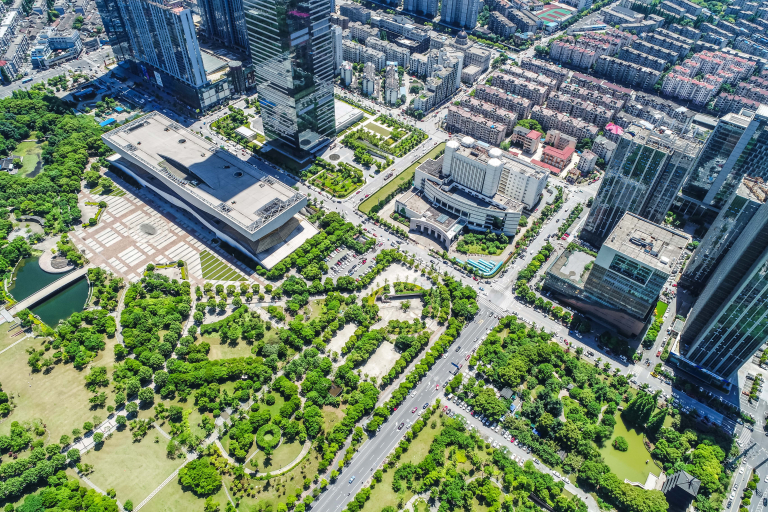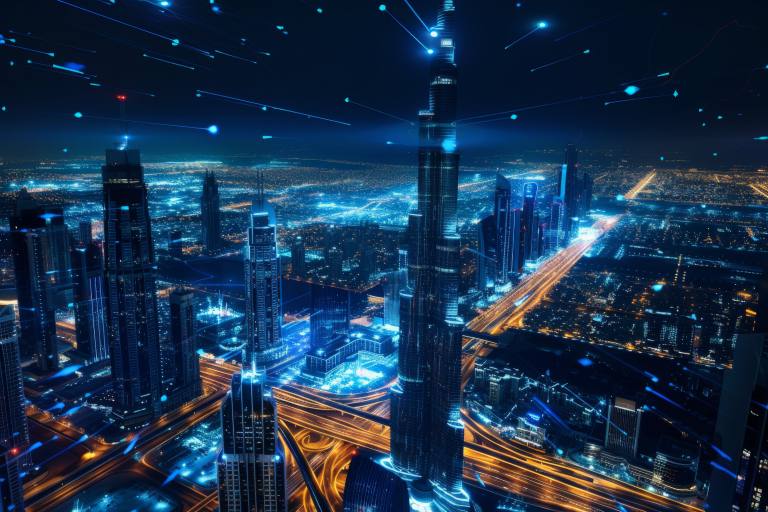In an era where urbanization is rapidly transforming the landscapes of our cities, the need for intelligent, sustainable, and efficient urban planning has never been more critical. Smart cities, characterized by their use of technology to improve infrastructure, optimize resources, and enhance the quality of life for their residents, are at the forefront of this transformation. Central to the development of these smart cities is Building Information Modeling (BIM), a revolutionary digital tool that facilitates the planning, design, and management of urban environments. By integrating BIM into urban planning processes, city planners and developers can create more accurate, data-driven models of city infrastructure, leading to better decision-making and more resilient, adaptive cities. This blog post explores the pivotal role of BIM in the evolution of urban planning and smart cities, highlighting its benefits, challenges, and the future of urban development in an increasingly digital world.
Understanding Urban Planning and Smart Cities
Urban planning is the art and science of shaping cities. It involves thoughtfully laying out the land for different uses, like housing, businesses, and green spaces. Planners also consider how people and goods will move around, ensuring efficient and sustainable transportation options. Their goal is to create cities that are not only functional but also livable, prioritizing factors like safety, health, and a high quality of life for residents.

Smart cities take this concept a step further, leveraging technology to enhance these aspects. Imagine a city that uses sensors to optimize traffic flow, cutting down on congestion. Or one that employs smart grids to manage energy consumption in buildings, promoting sustainability. These are just a few examples of how smart cities utilize technology to improve efficiency, citizen engagement, and overall well-being. By combining thoughtful urban planning with innovative solutions, cities can evolve into smarter, more livable spaces for the future.

BIM for Urban Planning: Building Cities of the Future
Building Information Modeling (BIM) has revolutionized the construction industry by creating digital twins of buildings, consolidating data-rich 3D models with all aspects of a structure. But BIM's potential extends far beyond individual buildings. In the realm of urban planning, BIM transforms into City Information Modeling (CIM), creating a comprehensive digital representation of the entire urban environment.
This digital city holds immense benefits for urban planning. Here's how BIM fosters a smarter approach to shaping our cities:
Improve Collaboration
BIM acts as a central platform where architects, engineers, and planners can work together seamlessly. Each discipline can contribute their expertise to the model, identifying potential conflicts early on, like clashing underground utilities or obstructed sightlines before construction even begins. This collaborative environment streamlines communication and reduces costly rework down the line.
Visualizing the Future
BIM allows planners to create stunningly realistic 3D visualizations of proposed urban designs. This goes beyond just aesthetics – it allows stakeholders to virtually walk through the city, experiencing the impact of different development scenarios firsthand. Traffic flow simulations, wind tunnel analyses, and even daylight studies become possible within the BIM environment, enabling informed decision-making before a single brick is laid.
Data-Driven Decisions
BIM is not just about visuals; it's a powerhouse of data. The model stores information about everything from building materials and energy use to traffic patterns and green space distribution. This data can be analyzed to optimize land use, identify areas for improved sustainability, and make data-driven decisions about infrastructure development. With BIM, planning goes from guesswork to science, ensuring cities are built with efficiency, sustainability, and the needs of future generations in mind.
BIM for Smart Cities Development: Building Brains into Our Cities
The concept of BIM takes on a whole new dimension when applied to smart cities. Here, BIM transforms into a central information model, a digital replica of the entire urban environment, not just buildings. This comprehensive model acts as the brains of the smart city, integrating information on everything from:
Physical infrastructure: Buildings, roads, bridges, utilities, and even natural elements like parks and rivers.
Smart technologies: Sensor networks embedded in buildings and throughout the city, collecting real-time data on traffic flow, energy use, and environmental conditions.
Historical data: Information on past construction projects, maintenance schedules, and resource consumption patterns.
This rich data becomes the foundation for BIM's powerful integration with other smart city technologies:
Sensors and IoT Devices: BIM can be linked to real-time data feeds from sensors and Internet of Things (IoT) devices deployed throughout the city. This allows for dynamic updates to the model, reflecting actual traffic congestion, energy consumption patterns, and environmental conditions.
Analytics Platforms: BIM data can be seamlessly integrated with smart city analytics platforms. These platforms analyze the vast amount of information collected to optimize energy use, predict traffic flow, and identify areas for improvement in resource management. Imagine BIM feeding data into an analytics platform that then recommends strategies for reducing energy consumption in a specific neighborhood.
Here's how BIM contributes to building smarter cities:
Optimizing Infrastructure Planning
BIM allows for the creation of detailed models of a city's infrastructure, including water and electricity grids, transportation networks, and waste management systems. By analyzing these models, planners can identify potential bottlenecks and optimize the design and placement of infrastructure elements for improved efficiency and sustainability.
Integrating Smart Technologies
BIM data provides a rich foundation for integrating smart technologies into city infrastructure. For example, information on building energy use within the BIM model can be used to design and implement smart grids that optimize energy distribution throughout the city. Similarly, data on traffic flow can inform the development of intelligent transportation systems for congestion reduction.
Life-Cycle Management of City Assets
BIM goes beyond the initial design phase. The data-rich models can be used for ongoing management and maintenance of city assets. By tracking information on building materials, maintenance history, and energy performance, city officials can proactively address maintenance needs and extend the lifespan of infrastructure.
Empowering Citizen Engagement
Smart cities are not just about technology; they're about creating a better quality of life for residents. BIM models can be used to create interactive visualizations of proposed developments, allowing citizens to virtually explore and provide feedback on urban planning projects. This fosters a more participatory and inclusive approach to smart city development.
Challenges and Considerations: Building Bridges, Not Walls
While BIM offers a compelling vision for smart city development, there are challenges to consider:
Interoperability
BIM software used by architects, engineers, and planners often comes from different vendors. Ensuring seamless data exchange and collaboration across these platforms remains a hurdle. Open standards and improved interoperability features are actively being developed to bridge this gap.
Standardization
Data exchange protocols for BIM need further standardization. Clear guidelines for data structure and formats are crucial for efficient information sharing. Industry collaboration and government initiatives are working towards establishing these standards.
Upskilling the Workforce
Successfully integrating BIM requires a skilled workforce. Training existing professionals and educating future generations on BIM technologies is essential. Educational institutions are increasingly incorporating BIM into their programs, and ongoing training opportunities are becoming more available.
In conclusion, BIM presents a transformative approach to smart city development, offering a central information model that integrates physical infrastructure, real-time sensor data, and future planning scenarios. If you're looking to harness the power of BIM for your smart city project, Harmony AT offers comprehensive BIM modeling services. Our team of experts can help you create a data-rich digital model of your city, enabling you to optimize infrastructure, make informed decisions, and build a smarter future for your citizens.
Categories





